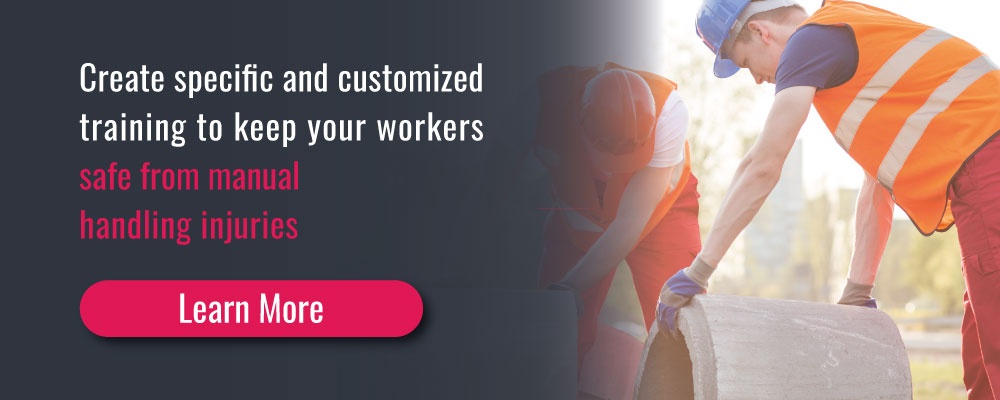 Manual handling refers to the pushing, pulling, carrying, holding, lifting, lowering of objects, and sometimes working from an awkward position, which the primary cause of back injury in the workplace. Employers are required to carry out risk assessments; teaching and encouraging workers to protect themselves from the risks of manual handling. Affecting workers through a gradual difficulty or an instant cut or fracture, there are a series of tasks that should carried out; from the complete recording of all the work involved to a review of the finished task to expose and prevent any future problems. Begin by providing important details on all the work covered:
Manual handling refers to the pushing, pulling, carrying, holding, lifting, lowering of objects, and sometimes working from an awkward position, which the primary cause of back injury in the workplace. Employers are required to carry out risk assessments; teaching and encouraging workers to protect themselves from the risks of manual handling. Affecting workers through a gradual difficulty or an instant cut or fracture, there are a series of tasks that should carried out; from the complete recording of all the work involved to a review of the finished task to expose and prevent any future problems. Begin by providing important details on all the work covered:- What does this task involve?
- Being aware of all the technical details involved
- Weight of 45 lbs/20kg for each box
- Not confirmed to be set on pallets
- Two workers will be involved (one lifting them out of the truck to the other worker, who will lift the boxes up to the end of a large warehouse)
- The distance from the truck to the back of the warehouse is 400 ft/122m
- 35 of these boxes have been ordered

- Identify the problems involved or risk factors
- Too heavy, e.g. weight of 45 lbs/20kg per box
- Too large
- Difficult to grasp
- Unbalanced or unsteady
- Too strenuous or repetitive, e.g. 35 boxes carried by one person
- Involving awkward positions or movement, e.g. lifting a heavy box, by hand down to another worker at a lower position
- Insufficient space for manual handling process
- Uneven, unsteady or slippery floor
- Poor lighting
- Lack of experience or training
- Unsuitable age
- Lacking physical strength, height or weight needed
- Prior history of back disorder
- Agree on and correctly implement any beneficial changes
- Order boxes to be stored on pallets
- A tail-lift can now be used to lift these pallets
- Tail-lift picks up a pallet with boxes on
- Pallet is taken to the storage area and put onto the ground
- Boxes are then lifted from each pallet by a worker into their storage area
- Requesting help if work is found to be too strenuous
- Avoid lifting loads above 40 lbs/18kg
- Feet should stay in a balanced position standing close to the object, knees bent into a comfortable squat, using leg muscles to lift the load
- Keep the spine naturally curved
- Do not twist at the hips or shoulders while lifting

- Review and Retrain if Necessary
